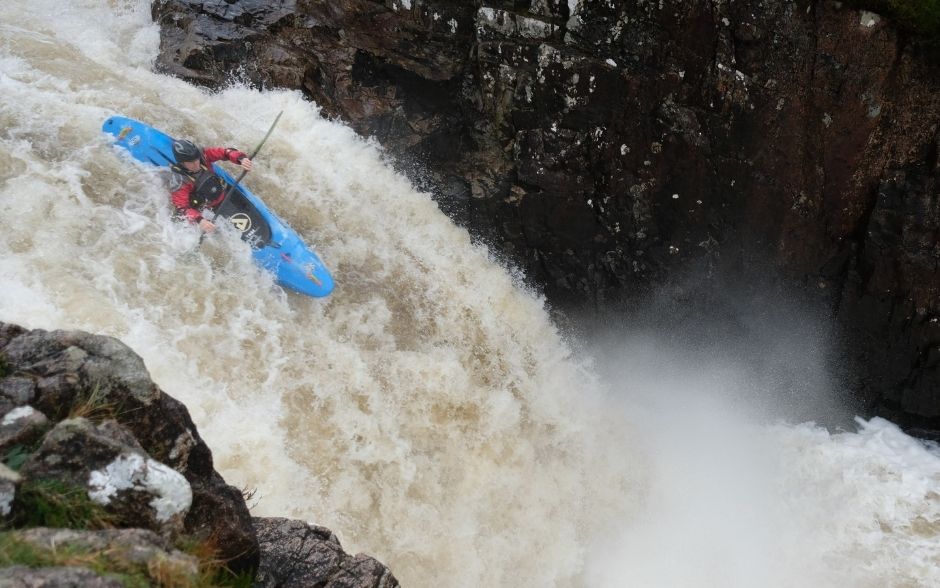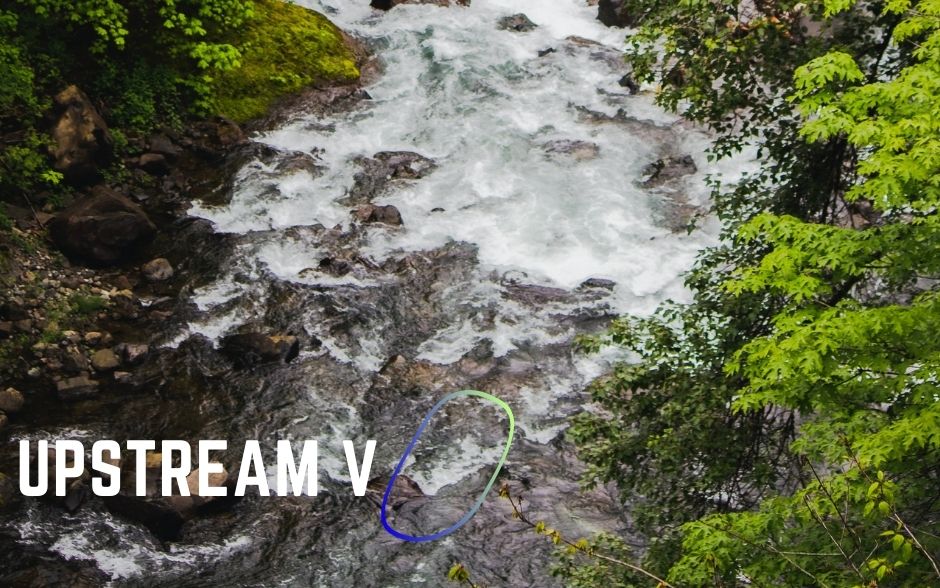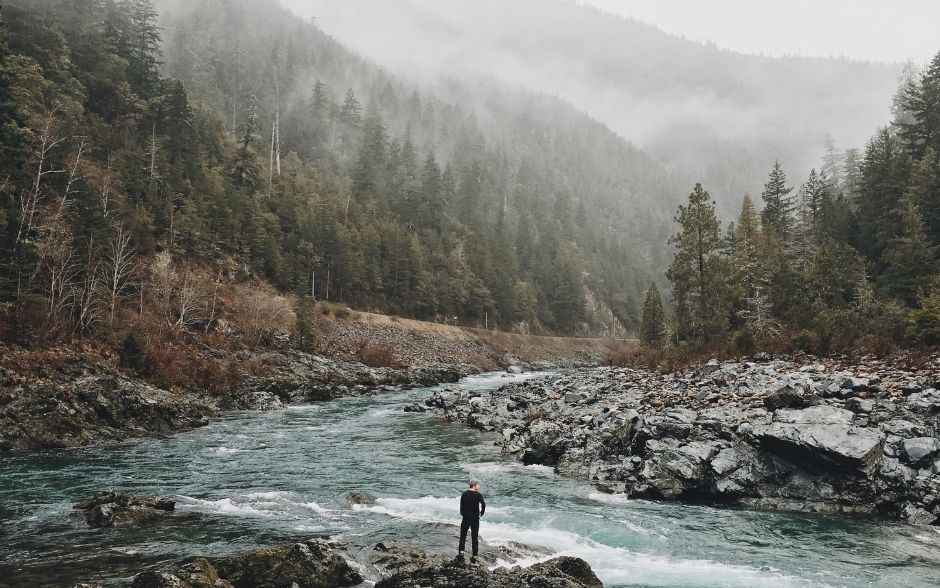6 Signs of River Danger

by Hannah Desmond
Rivers are a great place to take reprieve from summer's heat. They’re refreshing, public, and offer multiple activities from fishing to swimming and rafting. However, they're still a part of nature's power and it's important to know what dangers may be waiting around the corner or under the surface. So, here we're going to learn what signs to look out for to keep your river play safe.
CURRENT
The current itself presents a very real hazard. They can be disrupted by rocks under or above the water, fallen trees, or other debris. Learning to read the water is a great way to avoid hazards just below the surface. Downstream V-shaped flows indicate a clear channel through rocks. An upstream V indicates submerged rocks (see in the image below), which can be a danger to swimmers and a challenge for experienced paddlers. Currents are also known to be slower along the inside of a bend, faster along the outside, and faster on the surface than the river bed.


STRAINERS
Strainers are either manmade or natural obstructions that allow water to pass through, but prevents debris like boats or people. Strainers can be fallen trees, root systems, or fences that have gotten wedged in the river. Much like the current, the best thing to do is be aware of the river before you jump in. If you plan to paddle on a river ask the local visitor center or rental outfit for hazards to avoid. Research the possibility of fallen trees, large branches, unexpected waterfalls, and other hazards.
HOLES
Holes are small parts of the river where the top layer flows upstream and the bottom layer flows downstream, creating a hydraulic "washer machine" cycle effect. Holes are found in rapids when the water drops after a large rock or edge. Experienced kayakers have died every year by becoming stuck upside-down in a hole. If you're in a boat or kayak, the best thing to do is avoid the hole all together, if this becomes impossible, edge your boat downstream and make sure that your upstream edge does not catch and flip you. If you get pulled into the hole, dig your paddle deep enough into downstream current with the paddle perpendicular to the current to grab enough of the downward flow to pull yourself out.
RIVERBED
Riverbeds can be comprised of mud and rocks to old construction equipment. When swimming in a river, it's important to not slip on the river bed or get caught on anything. When swimming in current, it’s best not to stand up. If you get caught in a rapid out of your boat, float on your back with your feet downstream. Keep your butt high to avoid as many rocks as you can. After you clear the rapid, swim to the side of the river. It’s also always best to wear river shoes instead of swimming barefoot, since there are often sharp surprises in the water (i.e. pointy rocks, broken glass, and sometimes other animals).
HIGH WATER
High water levels is most common in the Spring after massive snowmelt or after an increase in rain in the region. During high water, peaceful streams can turn to rapids, where islands create holes, floating debris turn into shrapnel, and edges of rivers can flow through adjacent forests. High water can be very exciting if you make sure you’re going at the right time, at the right place, and with the right people. If the water in your region turns brown (and isn't usually brown) this is an indication that the massive churning is not only lancing the riverbed into the mix but it's also a warning sign of possible downed trees and branches with potential flash-flooding. Get out of the water if you see this.

COLD WATER
The most obvious danger of cold water is hypothermia. It’s important to recognize the signs and symptoms so you can take action. Hypothermia is a medical condition where a person’s core body temperature is 95 degrees F or below. Symptoms of hypothermia include shivering, clumsiness, slurred speech, confusion, fatigue, lack of concern, weak pulse, and shallow breathing. If you or your loved one is covered in wet clothes, it doesn't matter how much warmth or blankets you add, a wet body is a cold body. Remove all wet clothing and replace them with warm, dry ones (if you have them). Drink high energy warm alcoholic beverages (like hot cocoa) or eat warm food. The biggest risk of hypothermia is cardiac arrest.